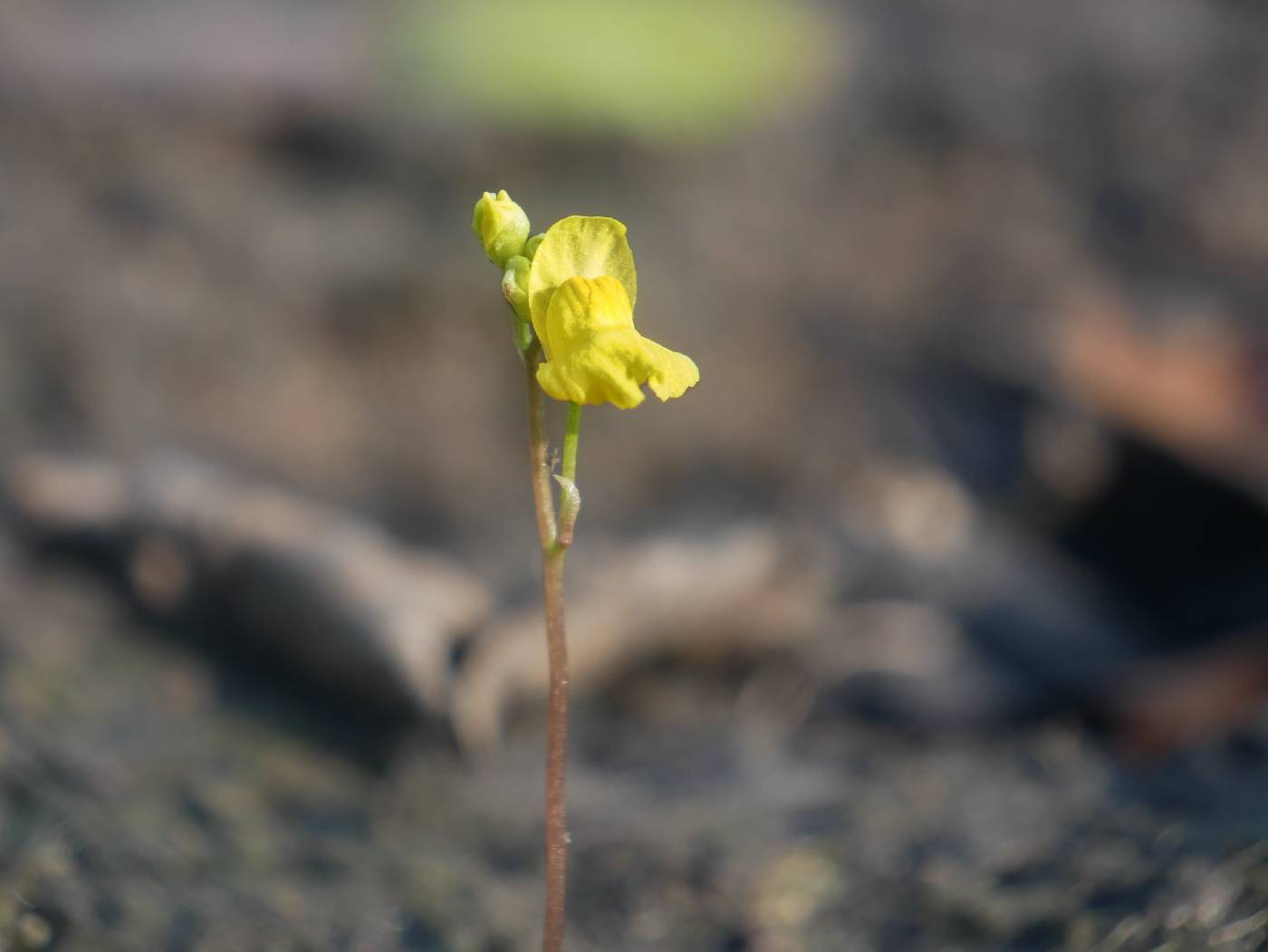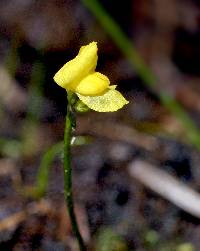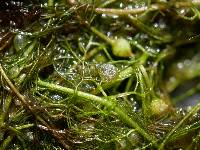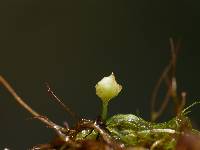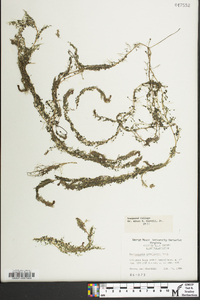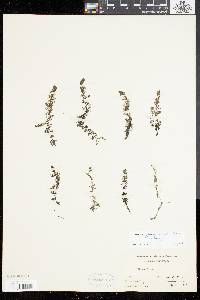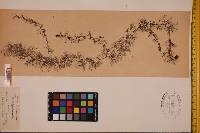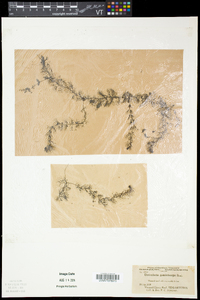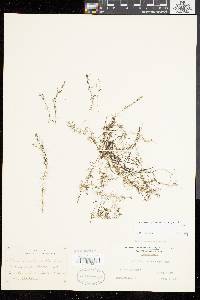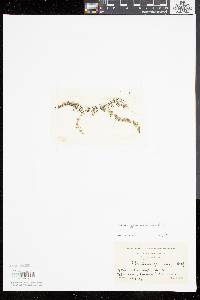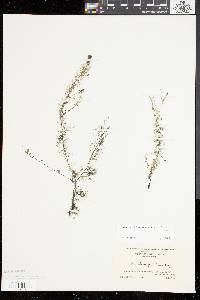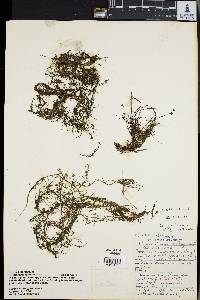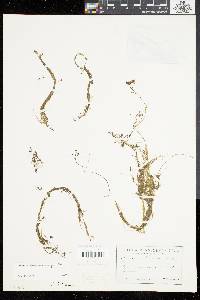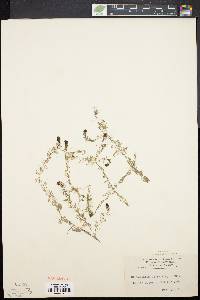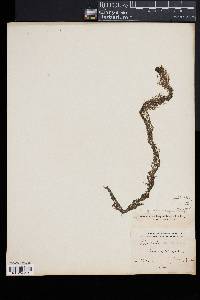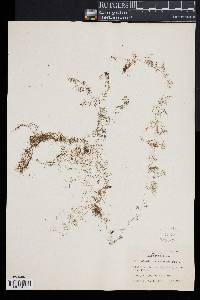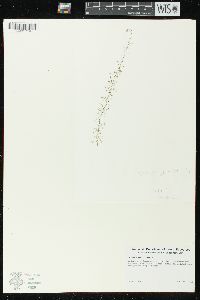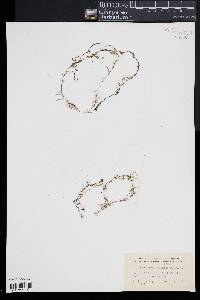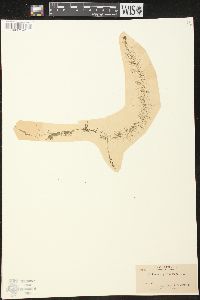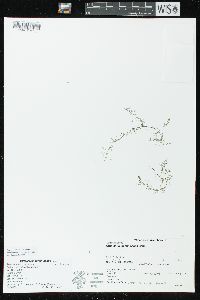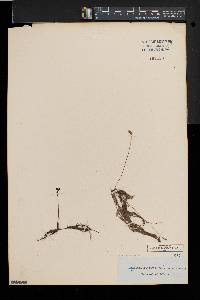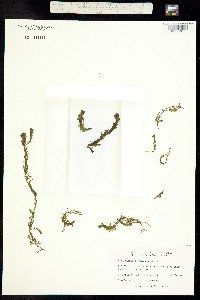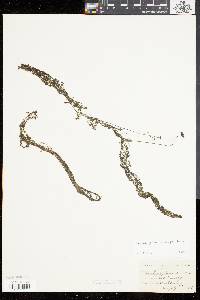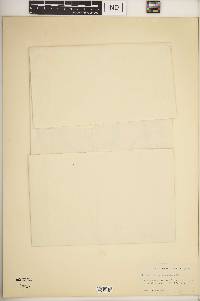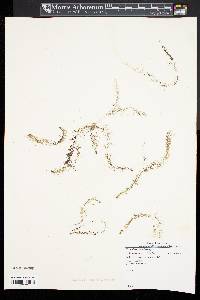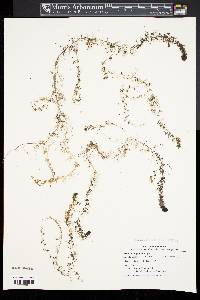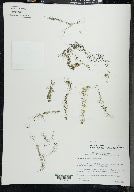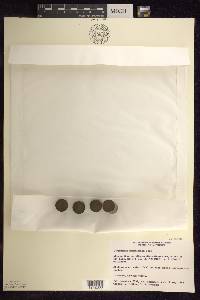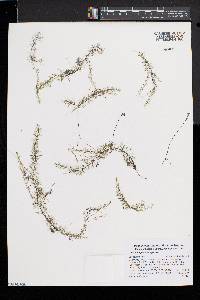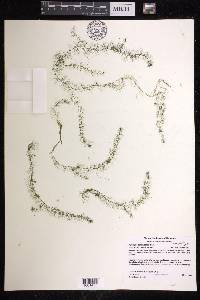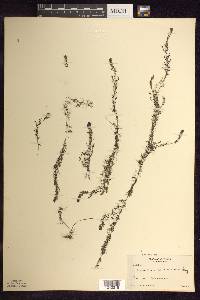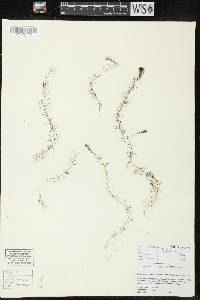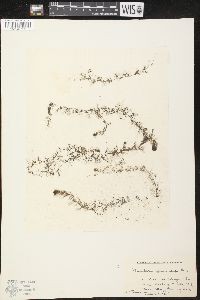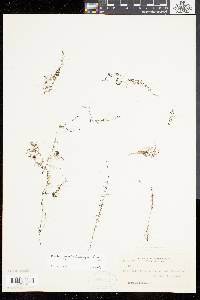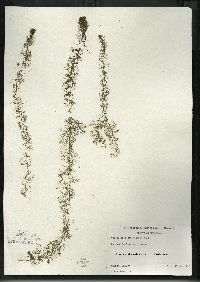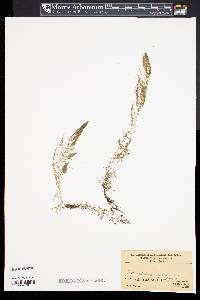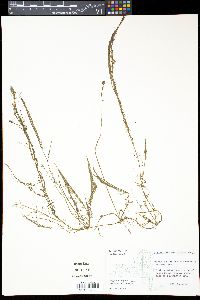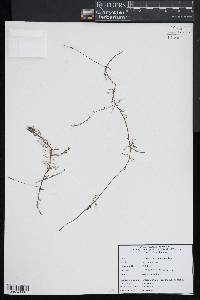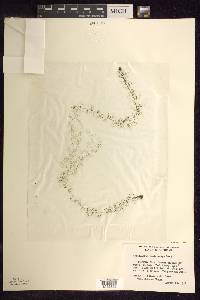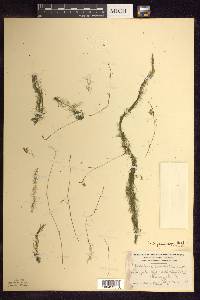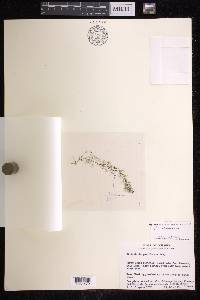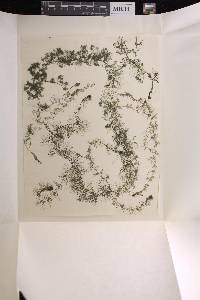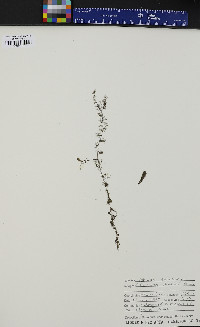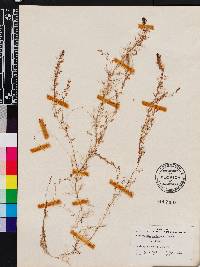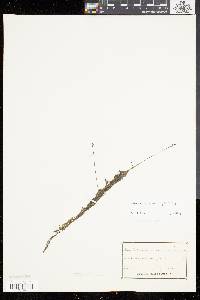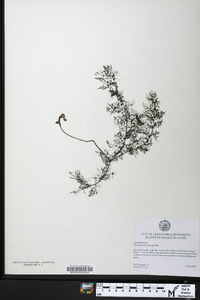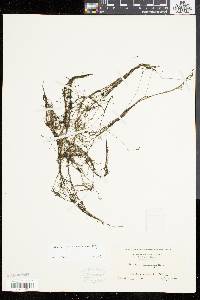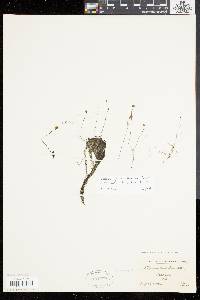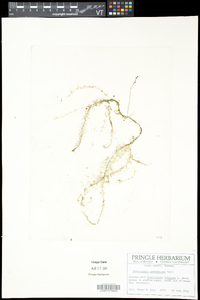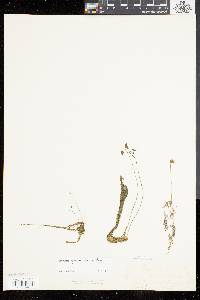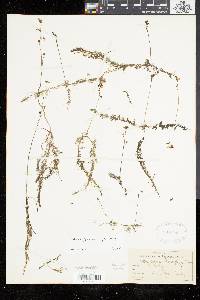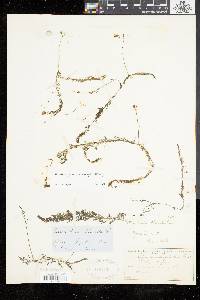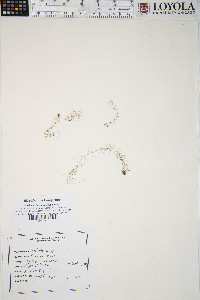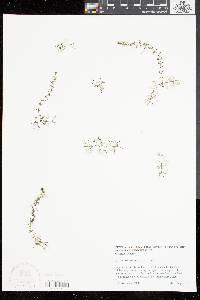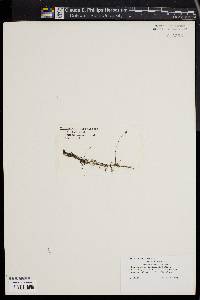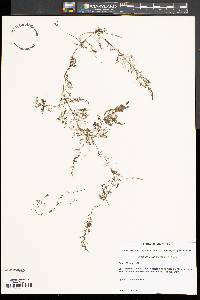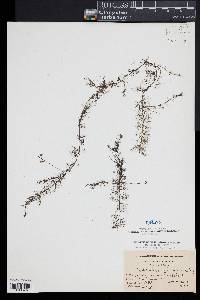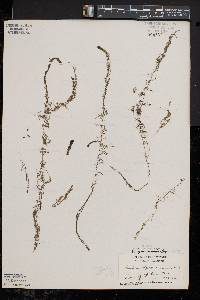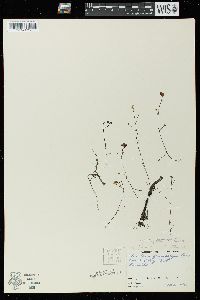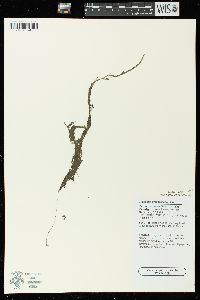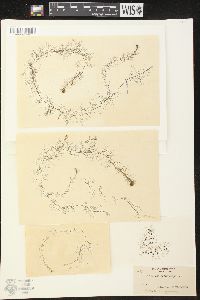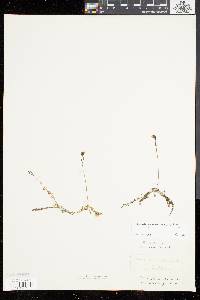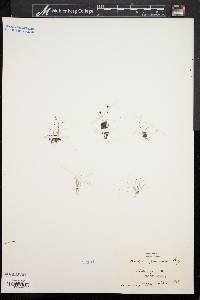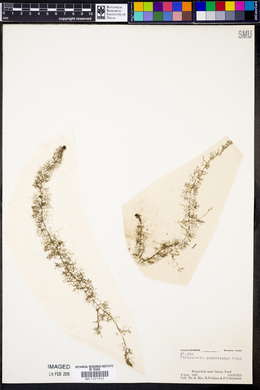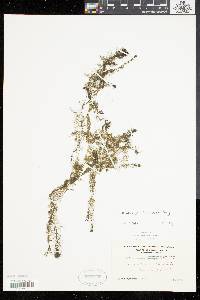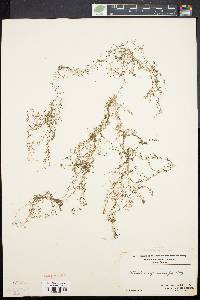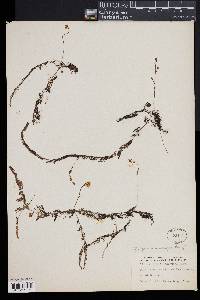
|
|
|
|
Family: Lentibulariaceae
Hidden-Fruit Bladderwort
|
Annual or perennial herb 5 - 15 cm tall Leaves: submersed, 1 - 2 cm long, often two-parted at base then forking several times, becoming shorter and narrower toward the tip, circular in cross-section, with a usually inconspicuous central axis (rachis) and bladders less than 2 mm across present on leaf segments. The leafy branches float beneath the water surface in a fine mass. Flowers: of two types, fully opening (chasmogamous) and non-opening (cleistogamous). Fully opening flowers are rare, borne six to twenty on a stalk (scape) less than 1 mm thick, are subtened by bracts, have yellow two-lipped petals with the upper lip a little shorter than the 6 - 8 mm lower lip, and a more or less straight spur (extended sac at base of petals) that is two-thirds as long as the lower lip and more or less projecting below it. Non-opening flowers borne solitary on 5 - 15 mm stalks, usually along submersed leafy stems, lacking petals. Fruit: a two-valved capsule on recurved stalks, containing small seeds. Similar species: Utricularia radiata, U. intermedia, U. minor, U. macrorhiza, and U. gibba are other aquatic or amphibious Utricularia species with dissected leaves. The flower stalk of U. radiata has a whorl of leaves with inflated petioles. Utricularia intermedia and U. minor have flat leaf divisions. Utricularia macrorhiza has flower stalks that are thicker than 1 mm, inflorescences with more than four flowers, and leaves with bladders larger than 2 mm across. Utricularia gibba has emersed flower stalks usually with at least one flower that opens (chasmogamous), but does not appear to have non-opening flowers (cleistogamous). It also forms a thick mat of leaves that creeps along the ground rather than floating. Flowering: late July Habitat and ecology: Marshes, bogs and deep bog pools. Occurence in the Chicago region: native Notes: This species was not known to exist in the Chicago Region until 1988. Bladders on the leaf segments catch small aquatic animals (carnivorous). Etymology: Utricularia comes from the Latin word utriculus, meaning "a small bottle."This refers to the insect-trapping bladders on the leaves and runners of the bladderworts. Geminiscapa comes from the Latin words geminus meaning twin, and scapus, meaning stem. Author: The Morton Arboretum Resembling no. 10 [Utricularia vulgaris L.], but much smaller; lvs 1-2 cm, usually with little trace of a central rachis; flowering branches 5-15 cm, without scales below the bracts; bracts 2-3 mm; pedicels to 8 mm, arched-recurving in fr; petaliferous fls with the lower lip 6-8 mm, somewhat surpassing the upper; spur not or scarcely falcate; cleistogamous fls without cor, solitary on pedicels 5-15 mm, often along the leafy submersed stems; peduncle naked. Quiet water; Nf. and Que. to n. Mich. and n. Wis., s. to Pa. and e. Va. July, Aug. (U. clandestina) Gleason, Henry A. & Cronquist, Arthur J. 1991. Manual of vascular plants of northeastern United States and adjacent Canada. lxxv + 910 pp. ©The New York Botanical Garden. All rights reserved. Used by permission. From Flora of Indiana (1940) by Charles C. Deam Indiana Coefficient of Conservatism: C = 10 Wetland Indicator Status: OBL |

